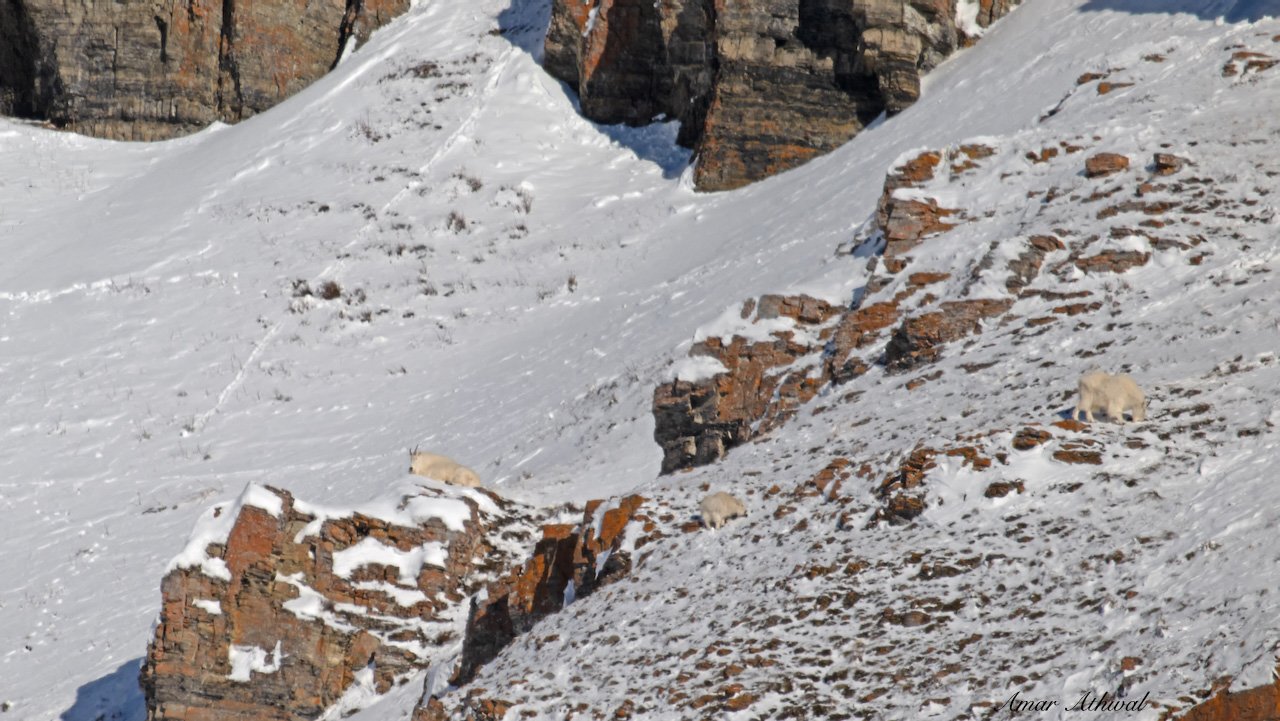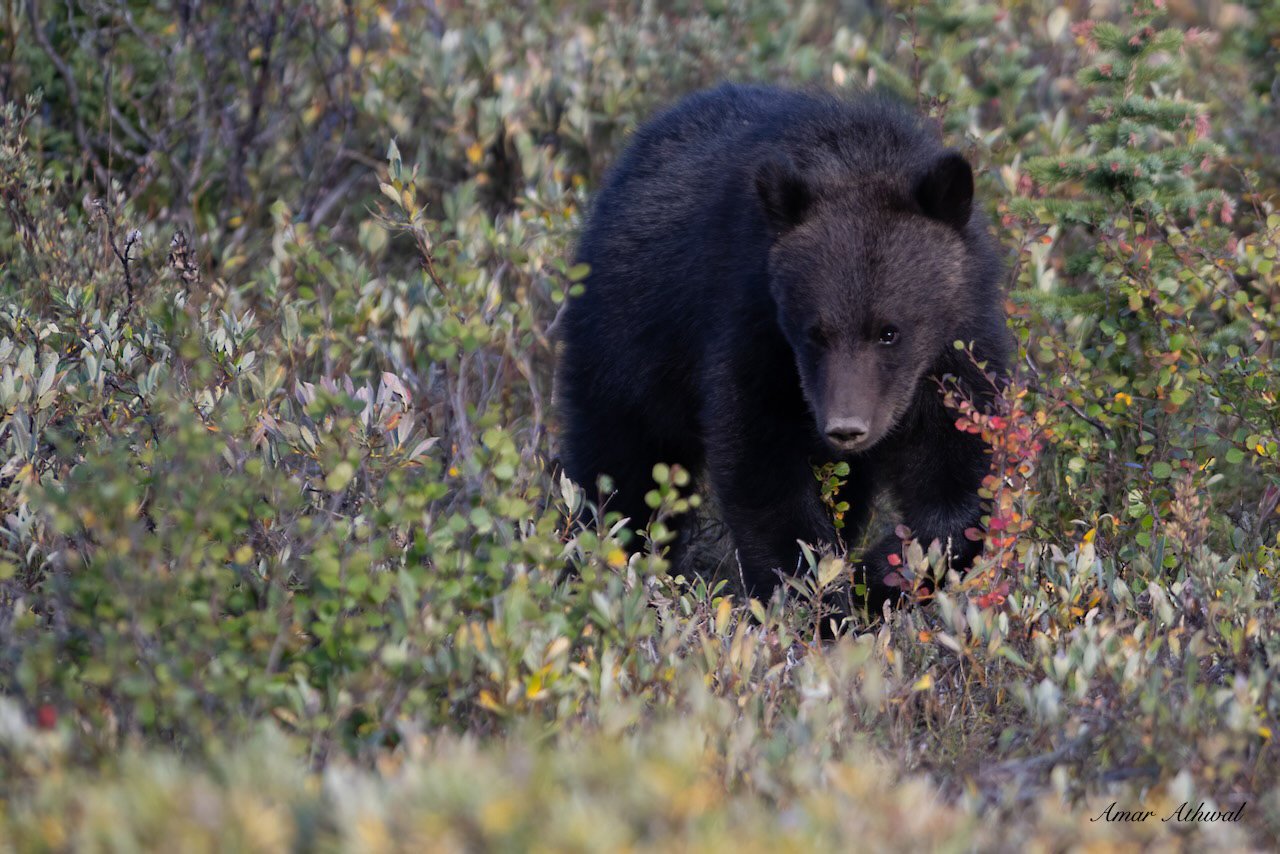It’s always easier to see what colour the mountain goats are when they are surrounded by snow. Of course, that becomes harder as you put more space between you and where the goats are. In this case, they were about a km away from me. All together, there were 15 goats on the side of the mountain. With many years of looking up with my naked eyes at the same locations, I can still tell if there are goats up there in the winter. Then I can watch them with binoculars or a zoom lens. A better way would be to use a spotting scope. The best way would be on the side of the same mountain but far enough not to bother them.
In this case, I was about a km away and I was able to get a picture with the zoom lens, crop it enough where there are still enough details to get an understanding of their winter habitat. The day the image was taken, the temperature was in the minus mid-teens. Their winter coat had no problem keeping them warm, it’s playing an even bigger role today when the temperature hit minus 41 degree Celsius. As we are all dealing with the first major deep freeze of this winter in the mountains. Life is about trade-offs. The goats must deal with extreme weather events and lower quality of food at higher elevations, but there are less predators to deal with. Over the winter with them, as with many other prey, they will not be gaining weight. It’s all about being efficient and using just enough energy to get them to spring. Another good reason for not bothering them if you happen to come across them over the winter months.



















